Picture this: Despite your jam-packed schedule, you’ve still reserved enough time to unwind and relax before bed. Your bedroom is cool, calm, and dark, and you’re able to fall asleep and stay asleep without any trouble. The next morning, you manage to wake up before your alarm and feel well-rested, perhaps even energetic, and ready to take on the world.
If this sounds like a scenario you can only dream of, you’re not alone. Whether you live in a home in Kansas City, MO, an apartment in Minneapolis, MN, or a rental home in Des Moines, IA, there’s a good chance your bedroom isn’t set up for optimal rest. In fact, only about half of Americans wake up feeling well-rested. To help, we’ve gathered the 17 best tips for creating the ideal sleep environment to improve your quality of sleep so you can (finally) get a good night’s rest.
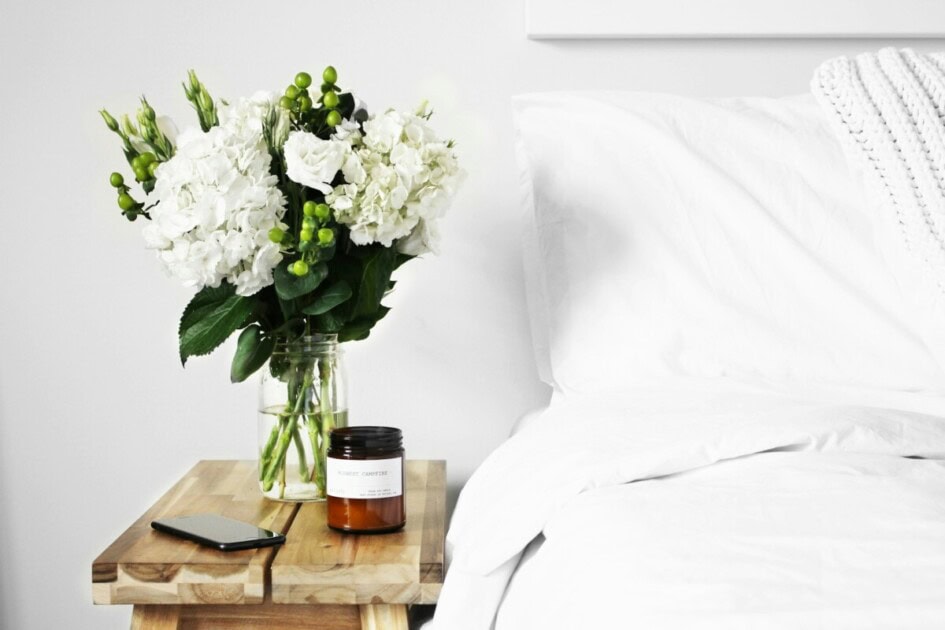
1. Declutter your room, improve sleep quality
“An organized and clutter-free space can significantly enhance sleep quality by creating a peaceful and calming atmosphere,” shares Southern Roots Organizing and Style Co., serving clients in Frisco, TX, and surrounding areas. “When your surroundings are tidy, it’s easier to relax and fall asleep, as there are fewer distractions and stressors. This sense of order can help signal to your brain that it’s time to rest, leading to more restorative sleep.”
Below, organizing and decluttering experts weigh in on best practices for keeping an organized and decluttered space.
Limit distractions
Keeping your bedroom tidy and removing any potential distractions is essential for your body to begin to relax. Ever tried to fall asleep but couldn’t clear your mind? Emily Santos, founder of Essential Organizing in Seattle, WA, recommends clearing the clutter in your bedroom. “Begin by tidying surfaces such as your dresser, nightstand, or floor, reserving items that induce calmness or serve a purpose. Discard or relocate the rest, and a helpful tip is to temporarily move items to another space for sorting, making it easier to identify what truly belongs in the bedroom.”
Invite tranquility in
“As a professional organizer, I’ve seen firsthand how transforming a cluttered bedroom into a serene sanctuary can work wonders for improving sleep quality,” explains Angela Nguyen, owner and professional organizer at Bring It Home Style in Fairfax, VA. “By creating an organized space, you invite tranquility into your life, allowing your mind to unwind and relax at the end of a busy day. So, declutter those surfaces, tidy up those closets, and let the peaceful vibes flow for a restful night’s sleep like never before.”
Wake up feeling refreshed
“By prioritizing organization in the bedroom, you can improve sleep quality and wake up feeling refreshed,” says Raychel Klein, Seattle, WA-based professional organizer and Certified KonMari Consultant at RayBayBay. “Clutter and disorganization can lead to feelings of stress and anxiety. When your bedroom is tidy, it promotes a sense of calm and relaxation, making it easier to unwind and fall asleep. Remove distractions or items that don’t belong in the bedroom or are a source of stress, such as exercise equipment, displeasing decor, aggressive lighting, and paperwork. Lastly, implement daily habits such as making the bed each morning, putting things away immediately, doing laundry regularly, and keeping surfaces clear.”
Keep the space under the bed clutter-free
Adi Groysman, owner and CEO of Organizing Sense in Seattle, WA, suggests keeping the space under your bed clutter-free. “Maintaining a clutter-free space under the bed not only aids in cleaning but also promotes better sleep quality. Clearing this area allows for easier access, reducing dust buildup and positively impacting rest. Additionally, it fosters better energy flow, enhancing harmony and balance in the bedroom. For smaller spaces, consider hidden storage solutions like movable baskets or bins to minimize visual clutter and create an organized environment conducive to relaxation.”
Create an organized sanctuary
“If you struggle with anxiety and sleep challenges, a cluttered bedroom can make things worse,” says Spring Courtright, creator, coach and teacher at TidyWild Organizing. “I believe it’s 100% worth the time it takes to set up our bedrooms to be a sleep sanctuary, and science thinks so, too. Remove clutter that doesn’t need to be in your bedroom, whether you tackle it all at once or bit by bit. Surround yourself with items that signal to your brain that you’re going to get a great night of sleep, such as photos, quotes, and comfort items. Use an ‘in-between basket’ for clothes you might wear again instead of tossing them on the floor. Add as many soft, cozy items as you need to feel safe and comfortable; I use two body pillows and super soft sheets. Keep a pen and paper near your bed to clear mental clutter before sleep or jot down thoughts if they wake you in the middle of the night.”
“As the creator of The Design Your Healthy Life Strategy, I always ask my clients, ‘How do you sleep?’, shares health and wellness coach Melanie Cohen. “I’ve noticed a common issue: clutter’s impact on restful sleep. Clutter affects mental and emotional well-being, increasing stress and anxiety, causing distractions, and even leading to respiratory issues. Decluttering can improve sleep quality. By starting small, organizing, prioritizing the bedroom, and practicing mindfulness, anyone can create a sleep sanctuary. Embracing a clutter-free environment leads to deep, uninterrupted, and revitalizing sleep.”
Your next home is just a tap away
Explore new homes every two minutes with the Redfin app.
2. Clean your sleeping space
Your next home is just a tap away
After you’ve decluttered your room, now is the perfect time to clean your sleep space thoroughly. We had professional cleaners weigh in on how they recommend tackling this task for the best results.
Promote relaxation with a tidy environment
“Cleaning your home does more than just complete a task on your to-do list; it also offers significant health benefits, like improved sleep quality,” states Sunshine Clean Pros in New Jersey. “By keeping your surroundings tidy, you minimize distractions and promote relaxation, which can enhance your sleep. A cluttered space can lead to a cluttered mind. By tidying up, you can declutter your thoughts, fostering a sense of calm that encourages better sleep.”
Ginger Maids Cleaning Services in Denver, CO, also speaks to this. “Drifting off to sleep without the looming task of cleaning up in the morning, the next day’s to-do list dwindles, reducing stress and promoting a calmer state of mind. This relaxation of the mind is crucial for transitioning smoothly into deep, restorative sleep.”
Clean your sheets
Ken and Darlyn Theisen, owners of Cleaning Solutions in Mount Pleasant, MI, touch upon the importance of keeping your sheets clean. “A neat space feels like a comforting hug goodnight, especially with fresh, dust-free sheets. Clean bedding not only promotes relaxation but also improves sleep quality by reducing allergens like dust mites and pollen, sweat, and bacteria. So why not give your sleep sanctuary a cleaning refresh and drift off to dreamland more easily?”
Thoroughly dust your room
“How well and how deeply a person can breathe at night can have a major impact on the quality of their sleep,” shares Andre Kazimierski, owner of Sophia’s Cleaning Service, serving La Grange, IL, and surrounding areas. “Being able to take deep breaths can increase melatonin production, which has a positive effect on a person’s sleep cycle. One of the most impactful elements that can contribute to how well a person breathes while sleeping is the cleanliness of the space. Dust and allergens (in many places in the U.S., May is the worst month of the year for pollen) build up on all of the surfaces in a room and can make it more difficult to take a good, deep breath. So, staying on top of thoroughly dusting and cleaning your bedroom’s surfaces weekly is one of the best ways to ensure a good night’s sleep.”
Michael Bogoyavlenskiy, managing director at Cleaning Express, believes the most important thing you can do for a solid night’s rest is dust. “By eliminating dust, pet dander, and other airborne particles from surfaces, you create a cleaner atmosphere conducive to easier breathing and, consequently, more restful sleep. This simple yet effective measure reduces allergens and irritants, promoting better respiratory health and facilitating a deeper, more rejuvenating sleep experience.”
Heather Mueller, owner of Deep Clean Atlanta explains the health benefits of dusting. “When dust is eliminated you can breathe easier thus your body doesn’t need to work so hard while you sleep, promoting organic cellular recovery that can only be achieved during a true resting state; which can help you to thrive in all aspects of your life.”
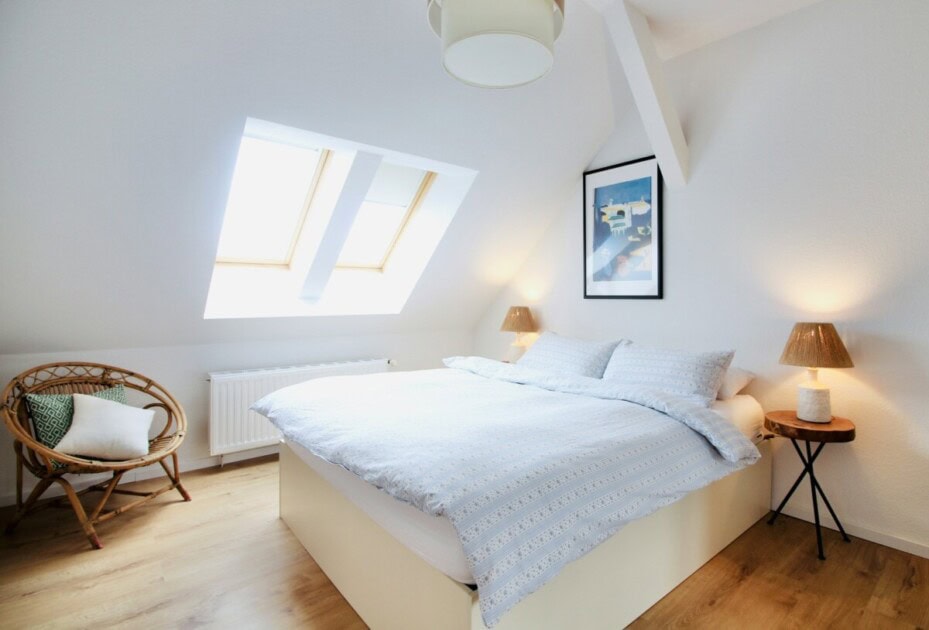
3. Reduce harsh lighting in the evening
Research shows that blue light exposure keeps you awake by increasing alertness, shifting your circadian rhythm, and suppressing the sleep-promoting hormone melatonin. We hear from lighting experts who recommend several strategies to mitigate these effects and improve your sleep quality.
Embrace warm-toned lighting
“Boost sleep quality by embracing warm-toned lights in the evening, simulating a calming sunset,” suggests Zach, creator and owner of Plotted Lights, offering advice on interior lighting design. “Avoid blue light from screens at night, as it can disrupt melatonin production and hinder restful sleep. Additionally, consider installing motion-activated lights under the bed that emit a soft, warm glow. This will make late-night trips to the kitchen or bathroom so much easier.”
Opt for dimmable fixtures
“The impact of lighting on our circadian rhythm cannot be overstated,” emphasizes interior lighting company, Okeli Lights. “Exposure to bright, blue-rich light in the evening can disrupt our natural sleep-wake cycle, making it difficult to unwind and fall asleep. Dimmable fixtures offer a solution to this problem by allowing users to gradually dim the lights as the night progresses. This mimics the natural transition from daylight to darkness, signaling to our bodies that it’s time to wind down and prepare for sleep.”
4. Utilize blackout curtains
Creating an ideal sleep environment is crucial for quality rest, and managing light exposure is a key factor in this process. Below are insights into the benefits of blackout curtains to aid in better sleep.
Block light, regulate temperature, and reduce noise
Yasmin Johnston, owner of Mindful Sleep Consulting, speaks on the importance of blocking external light and noise. “Standard drapes let in ambient light, which can be disruptive to sleep patterns by interfering with melatonin production. Blackout curtains, designed to block external light, create a dark environment for deeper rest. They’re made with thick materials that regulate room temperature, keeping it stable and comfortable year-round.”
“Additionally, incorporating sound-absorbing fabrics and insulating shades like cellular shades further aids in noise reduction and heat regulation, promoting optimal sleep conditions,” adds Oana Molodoi, owner and designer at OM Drapes Design, serving the Orange County area. “Automated shades and draperies that follow our circadian rhythm by opening with the morning sun and closing gradually at dusk contribute to our overall well-being, showcasing how interior design, especially in window treatments, can positively impact our quality of sleep.”
Include light-filtering material behind blackout curtains
“Consider incorporating light-filtering or sheer material drapery behind your blackout curtains,” suggests Excellent Blinds & Shutters, servicing Ontario, CA, and surrounding areas. “This allows some natural ambient light to filter into the room, creating a calming and less intrusive environment, perfect for daytime naps while still maintaining privacy. For added convenience, consider motorized drapery that allows you to adjust curtains effortlessly using a remote or smartphone, ensuring optimal light control without leaving the bed.”
Opt for breathable fabrics
“Breathable fabrics enhance airflow to maintain comfort and prevent the room from becoming stuffy,” shares Design Your Blind in Boca Raton, FL. “In addition, heavier drapes with interlining improve thermal insulation and enhance sound absorption, providing an extra layer of tranquility. The right drapery choices can significantly improve sleep quality, turning your bedroom into a restful sanctuary.”
Consider adding side channels or additional drapery
Ben Crotteau, owner of SunCoast Blinds in Bonita Springs, FL, recommends adding side channels to remove light leaks. “The light level in your sleeping space is the #1 controllable variable in sleep quality. While it is easy to turn off the lights, getting your windows dark is another challenge altogether. For most people, a room-darkening shade or plantation shutters are sufficient enough to provide a good sleeping environment. However, if you want to remove all possibility of light leaks, you can add side channels or additional draperies on top of your shades.”
A must for light-sensitive people
“By effectively blocking out external light sources, blackout shades promote deeper and more restful sleep, particularly beneficial for individuals sensitive to brightness or those who work irregular hours,” states ShadeMonster, a company offering solar, blackout, zebra, and motorized shades.
This enhanced darkness can help regulate circadian rhythms, leading to improved overall sleep quality and daytime alertness. When your bedroom is sufficiently dark, it mimics the natural environment that our bodies are accustomed to for sleep, signaling the brain to produce melatonin, the hormone responsible for inducing sleep. This process not only helps you fall asleep faster but also promotes deeper, more restorative sleep cycles.”
5. Diffuse essential oils
It’s no surprise that smell influences how we feel by associating scents with emotions and memories. Often overlooked, essential oil for sleep can help you wind down, relax and eventually drift off. Essential oil aromatherapy is a quick and inexpensive solution to combat poor sleep, helping you relax physically and mentally. Lavender and vanilla are the more popular oils to help you sleep and can be added to an aromatherapy diffuser or vaporizer to disperse into the bedroom.
Utilize the essence of plants
“Aromatherapy harnesses the natural essences of plants to nurture health and tranquility,” explains Denise LaPalm, a certified professional aromatherapist and founder of L’Beauxtique, a luxury beauty wellness brand. “Chamomile, with its sweet, apple-like scent, is renowned for its tension-relieving properties, fostering a sense of calm ideal for relaxation. Jasmine, boasting an intensely floral aroma, works wonders in alleviating anxiety and uplifting mood. Lavender, celebrated for its soothing floral fragrance, is known to ease anxiety and promote better sleep quality. Palo Santo has a rich, sweet, and woody scent, offering grounding effects that enhance relaxation and peace. Consider lighting an aromatherapy candle crafted with relaxing essential oils about an hour before sleep to help transition from day to night, helping you drift off more easily.”
A mix of lavender and roman chamomile
“Two of our favorite essential oils to use for sleep are lavender essential oil and Roman chamomile essential oil,” states essential oil and candle store, TheSoapery. “They both have a long history of use in aromatherapy for relaxation and sleep, and there is some scientific evidence too. One master essential oil blend to use for multiple sessions in a diffuser is: 12 drops lavender oil, 4 drops chamomile oil and 1 drop neroli oil. Diffuse in the 20 minutes before bed.”
Cedarwood, Vetiver, and Sandalwood
“While lavender is widely known for its relaxation benefits, some individuals may find it stimulating,” shares Nikki Fraser, CAHP, Clinical Aromatherapist at Essentria Aromatherapy School. “Grounding oils like cedarwood, vetiver, and sandalwood can quiet the mind and promote deep sleep. Copaiba and Roman chamomile are also effective in reducing stress and promoting relaxation. Use them by adding 8-10 drops to a personal inhaler, diffusing 2-3 drops in a diffuser for 15 minutes before bedtime, or placing 1-2 drops on a tissue near your bed. These methods harness the therapeutic benefits of essential oils, helping you relax and drift off into a peaceful sleep.”
Lavender, rose, and lilac
“Achieving a restful night’s sleep often begins with setting the right mood, and aromatherapy can be immensely beneficial,” says ExtractCraft, offering DIY tools for creating essential oils at home. “Lavender and rose extracts, commonly found in our gardens, are popular choices for creating a soothing atmosphere. Spring lilacs and summer blooms can also be easily extracted to provide delightful scents. Homemade extracts can be sprinkled onto pillows and bed linens for a long-lasting aroma that promotes relaxation.”
Roman chamomile, mandarin, and clary sage
“Inhalation is the best way to use essential oils, and less is more,” advises Colleen Thompson, Co-principal at Essence of Thyme College of Holistic Studies. Lavender (Lavandula angustifolia) is best for a calming sleep, while other lavender species might be energizing. Other helpful oils that cause the release of the neurochemical serotonin include sweet orange, Roman chamomile, mandarin, and clary sage, which can release serotonin to aid sleep. You don’t need a diffuser — just put a drop of oil on a cotton ball or gauze, inhale deeply for 20 seconds, and place it under your pillow for a restful night.
How to use essential oils to support sleep
Your brain begins to associate specific aromas with bedtime when you use aromatherapy nightly, signaling to the body that it is time to slow down, unwind, and rest,” explains Holly, a Registered Nurse and Certified Aromatherapist at Science of Essentials. “This also helps lower stress and anxiety levels, which are common barriers to falling asleep. Many essential oils possess natural sedative properties that promote calmness and aid in falling asleep faster.
Simply adding a drop of essential oil to your pillow can help slow down your nervous system and prepare your body for rest. Aromatherapy can be extremely beneficial in quieting a busy mind, allowing you to fall asleep faster, stay asleep longer and improve overall quality of sleep. Experimenting with different oil blends like lavender, chamomile, black spruce, and bergamot can help you find the perfect aroma to enhance your sleep quality and induce peaceful sleep.”
6. Paint your bedroom walls a soothing color
Color has a powerful effect on our mood and can influence our sleep quality by creating a calm environment. Research shows that the best bedroom color for sleep is blue, followed by yellow, green, and silver. Try to stick to neutral, pastel, or muted shades, as bold colors can trick the brain into thinking it needs to be alert.
Build a calming color palette
“Bedrooms offer a unique opportunity for personal expression, distinct from the overall design theme of the house,” explains Claire Tomm, Certified Color in Space ™ Color Consultant. “Unlike shared spaces, bedrooms can be tailored exclusively to your preferences, and can focus solely on what brings you comfort and relaxation to promote quality sleep. Choosing calming, low-saturation paint colors is a common recommendation, though the specific hues we define as ‘calm’ are subjective.
A winning formula involves building a color palette with minimal contrast and hues adjacent on the color wheel. Some find solace in rich, dark paint colors that create a cozy, cocoon-like atmosphere. Whatever your preference, consistency is key; you must repeat the main colors throughout the room to create harmony. Start with a rug, blanket, or statement art piece that inspires you, then pull colors from it to guide your paint color selection.”
Opt for warm white, soft textures, and natural materials
Pamela Lynn Interiors shares her color recommendations to create a peaceful bedroom “For a restful sleep, I recommend a soothing soft color palette for the bedroom. Nothing too jarring, such as deep reds or oranges. Stick with warm whites mixed with soft textures and natural materials. Look for colors like: Sherwin Williams Sanctuary (SW-9583) or Mortar (SW-9584). Another great option is soft greens, this color palette allows for a serene atmosphere. Invoking a feeling of being surrounded by nature. Consider colors like: Sherwin Williams Outrigger (SW-9517 or Canal Street (SW-9523).”
Color ideas for your bedroom
“The color of your bedroom can influence how you approach bedtime and impact your sleep,” says Pamela Fox, owner of Before You Paint in Northern California. Here are her favorite colors to create a beautiful, restful bedroom:
- Pink: Benjamin Moore: Milk Shake 1165. A very subtle browned pink that is soothing and inviting.
- Blue: Farrow and Ball: Skylight. A lovely pale silvery blue.
- Green: Benjamin Moore: Soft Fern 2144-40. A beautiful gray green.
- Greige: Behr: Sculptor Clay PPU5-08. A gray beige that hits a perfect midtone.
- Taupe: Benjamin Moore: Taupe Fedora CSP-260. A deep moody gray brown for a room dedicated to sleep.
Consider the atmosphere you want to create
“The best way to select a color for restful sleep is to consider the atmosphere you want to create,” says Theresa Ory, founder and principal designer at Theresa Ory Interiors. If you want to feel grounded, lean into taupes and earthier tones. Hoping to be embraced by serenity? Consider soft blue-green hues. Or for a bit more warmth and nostalgia? Play with blushy peach tints.”
Pair blues with neutrals
“Choose calming blue hues like sky blue or powder blue to promote relaxation and reduce stress, ideal for ensuring restful sleep,” suggests interior design firm House Designer. “Pairing blue with neutrals like white or beige enhances the peaceful ambiance of your bedroom. Opt for gentle, muted tones and balance warm and cool colors for a harmonious environment. Avoid overly bright or intense colors, as they can disrupt sleep.”
Avoid loud and clashing color schemes
Jennifer Ott, Architectural Color Specialist at Jennifer Ott Design shares her insights on color palettes. “Stick to harmonious color schemes, favoring near-monochromatic or analog palettes with neutrals and adjacent colors on the color wheel. Opt for soothing hues like watery blues or silvery purples such as Ocean City Blue or Vanity.
Alternatively, create a cozy atmosphere with deep, grounding tones like navy blue or dark tobacco found in Evening Dove or Urbane Bronze. Consider incorporating colors inspired by nature, like leafy greens or earthy taupes and terracottas such as Leaf Bud, Desert Dune, or Red Earth, known for their anxiety-reducing effects.”
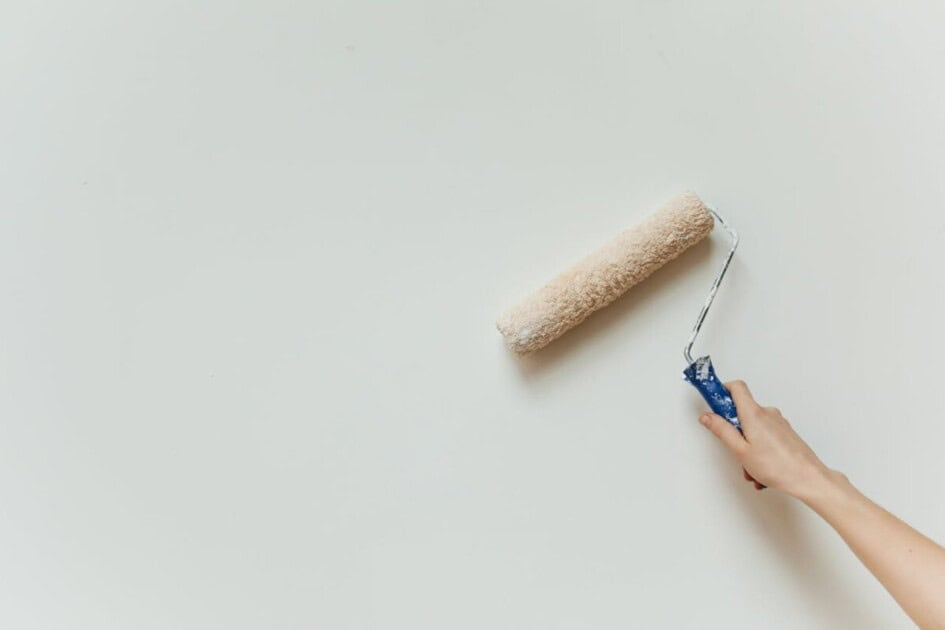
7. Create a nighttime routine
Most activities that many of us do in the evening — such as watching TV or using our phones — can be overstimulating. By staying consistent with a calming bedtime ritual, your body will recognize that it’s time for sleep, and screen time may not be as tempting. Your nighttime routine can be as simple as brushing your teeth, washing your face, flossing and maybe even enjoying a decaffeinated bedtime tea. The options are endless, and how you begin to wind down is ultimately up to you.
Tidy up and remove distractions
“A calming bedtime routine can signal to your body that it’s time to wind down,” explains Elizabeth Lulu Miranda, Mercury Organizing. “Establish a routine that works for you. Start by removing the things that distract your attention from a good night’s sleep, like the TV. Removing your TV altogether from the room or setting a timer to switch it off at a specific time will prevent the blue light from disrupting your body’s sleep cycle.
Start a habit of putting away your clothes, and straightening out the surfaces and side tables in your bedroom. Having the floor clear of clutter will allow you enough space to stretch or do yoga. Create a sleep station with a water bottle, tissues, or whatever else you need in the middle of the night.”
Try bedtime tea and journaling
If you struggle to calm the mind and body each night, Jenny Lang, NBC-HWC and owner of Libra Health Coaching suggests creating a simple routine that includes drinking a relaxing ‘bedtime’ tea coupled with five minutes of journaling to let go of the brain chatter. “Put the thoughts to bed by putting them on paper and allow the mind and body to relax and release together. Before you close the journal, challenge yourself to create a list of at least three things you are grateful for to make a positive mental shift that positions your mind for a more peaceful night’s sleep.”
Follow the 3-2-1 sleep method
Devin Burke, cofounder of Sleep Science Academy recommends practicing the 3-2-1 method to help ease into sleep: “Stop working 3 hours before bed, avoid electronics 2 hours before bed, and engage in a relaxing sleep ritual 1 hour before bed. This ritual can include activities like reading, journaling, meditating, praying, solving puzzles, listening to music, taking a hot shower, or having a bath. Choose activities that signal to your mind and body that it’s time to unwind and prepare for rest.”
Stick to the routine that works for you
“A sleep routine is like setting the stage for a restful night ahead,” states Tina Stinson, founder and CEO of Soul Aligned Self Care. “First things first, let’s dim those lights or switch them off altogether about an hour or two before hitting the hay. And here’s a tip: steer clear of screens at least an hour before bedtime — it really helps to ease your mind into sleep mode. Next, find what helps you unwind, whether it’s gentle yoga, soothing breathwork, a meditation session, or a relaxing shower or bath. Before you drift off, take a moment to reflect on something that made you feel grateful that day. It’s a lovely way to wrap up your day on a positive note. And here’s the secret sauce: try to stick to this routine as much as possible, timing-wise. Consistency is key—it helps your body get into a natural rhythm that promotes better sleep over time.”
8. Use a sound machine to improve sleep quality
“An effective way to significantly enhance your sleep environment and promote better rest is by implementing sleep sounds into your nightly routine,” says Dwellspring, an app designed to help improve sleep, manage anxiety, and block unwanted noise. “Soft, consistent sounds, like white noise, brown noise, or gentle rain, can mask disruptive background noises that might interrupt your sleep. These soothing sounds can also aid in lowering stress and anxiety levels, making it easier to relax and drift into a deeper sleep. There are physical sound machines as well as mobile apps that offer a variety of sleep-friendly soundscapes to find what works best for you. By creating a more predictable and calming environment, sleep sounds can improve both the quality and duration of your sleep.”
9. Select the ideal sleeping temperature
Whether you reside in a house in Detroit, MI, in the middle of winter, or Tampa, FL, in the summer, the best temperature to support a healthy night’s sleep is usually between 60 and 65 degrees Fahrenheit. However, this varies from person to person, and other elements in your environment—such as climate conditions, bedding type, and pajamas — can have an influence on your best temperature for sleeping. Some people tend to be warmer sleepers than others, which could also sway their ideal sleeping temperature. Nonetheless, temperatures over 75 and below 54 degrees Fahrenheit are sure to disrupt your sleep.
Stella Loichot, wellness coach at Allon-Z Coaching emphasizes the importance of room and body temperature for sleep quality. “For good sleep, melatonin release requires a drop in body temperature. Keep your bedroom cool (60-65°F) and consider opening a window. Use a lighter comforter, preferably down for better temperature regulation. Avoid anything that could raise your body temperature before bed, like hot baths, spicy foods, and intense workouts. Opt for calm exercises like swimming, walking, stretching, or yoga. Dress in layers to adjust as needed during the night. If your hands and feet are cold, wear socks, mittens, or a hat to keep extremities warm and maintain comfort.”
10. Refrain from sleeping with pets
Approximately 45% of Americans share their bed with their dogs, but this habit might be affecting your sleep quality. Allergies to pets, particularly cats and dogs, can worsen when sleeping together, as allergens can accumulate in bedding and clothing. With a wide range of styles of pet beds and crates to consider — such as a nesting bed, elevated bed, or a heating bed — it could be time to look into an alternate sleeping arrangement for your companion.

11. Avoid caffeine consumption after 2 p.m.
We’ve all been there — it’s 10 p.m. and you are still wired from that afternoon cup of joe. Research shows that consuming caffeine even six hours before bed can disrupt your sleep. If you rely on a daily afternoon pick-me-up, chances are your caffeine-infused stimulant could be affecting your sleep quality and duration. Begin your day with highly caffeinated drinks and slowly reduce your caffeine intake throughout the morning by switching to tea or decaffeinated coffee. You’ll definitely want to cut out caffeine altogether by 2 p.m.
12. Be kind to your body
Exercise not only releases endorphins but also helps you fall asleep faster and wake up feeling well-rested. Even as little as 10 minutes of exercise at any time during the day can greatly increase sleep quality. Joining a local gym, meeting regularly with a personal trainer, or finding a physical activity that you enjoy are all ways to get a good sweat in. If you have a limiting schedule, you can even create an in-home gym for flexibility and convenience.
Nurse and life coach Helen Duyvestyn shares her insights into this topic. “What you ingest earlier in the day can greatly impact your sleep. Alcohol may help you fall asleep but leads to poor sleep quality and wakefulness. Diets high in sugar can cause blood sugar drops at night, leading to wakefulness. Caffeine is known to affect sleep, but chocolate can have a similar effect due to theobromine, especially in darker chocolate. Avoiding sugar, alcohol, and chocolate might help you get a better night’s rest.”
13. Emphasize symmetry with furniture placement
For an ideal sleep environment, it’s essential to think about the positioning of your furniture as this plays a role in the functionality and symmetry of your bedroom. For optimal balance, position your bed against the middle of a wall as far away from the door as possible, and with room on both sides. When lying in bed, you should be facing the door with your feet closest to the entrance. If possible, try to avoid lying with your head underneath the window.
14. Find your ideal pillow
To maintain spinal alignment while you sleep, the standard rule of thumb is to replace your pillow every 1 to 2 years. However, if you lie awake unable to get comfortable, or wake up with headaches, neck aches, and shoulder pains, you might consider finding a replacement earlier. When choosing pillow firmness — ranging from softer choices like down pillows to firmer choices like buckwheat pillows — keep your sleeping position in mind. Stomach sleepers tend to prefer a thin pillow, back sleepers find that medium support works best, while side sleepers favor thicker pillows. Furthermore, if you have allergies or asthma, hypoallergenic covers are an option, protecting from any allergens that may trigger your symptoms.
15. Improve sleep quality by upgrading your bed
Upgrade your sleep environment by investing in a new mattress tailored to your sleeping position and comfort preferences. Test options in-store or try free home trials from mail-order companies. If on a budget, consider foam toppers for added comfort.
Consult your doctor for mattresses designed for specific health conditions. Choose sheets based on thread counts, weaves, and materials that suit your preferences, such as fleece for warmth or cotton for breathability. Find the perfect bedspread, whether it’s a comforter or duvet cover, to complement your sleep environment for a restful night.
16. Avoid naps too close to the evening
While short power naps are encouraged and offer many benefits, long naps in the late afternoon and evening can have negative effects on your sleep quality. Instead, limit naps from 15 to 30 minutes in the early afternoon. This will increase your chances of waking up feeling rejuvenated while still being able to fall asleep easily come bedtime. Your circadian rhythm drops in the early afternoon — between 2 p.m. and 3 p.m. — and can leave you feeling more sleepy and in need of a nap. This is the best time to doze off without disrupting your sleep at night.
17. Resist snoozing the alarm
You actually wake up more tired after snoozing your alarm, especially if hitting the snooze button multiple times is part of your routine. You can’t reach the restorative level of sleep between alarms, ultimately confusing your brain and throwing off the natural wake-up process. If you sleep for seven to nine hours per night, your body shouldn’t need the extra sleep and could even begin waking up on its own before your first alarm goes off. Try gradually reducing the number of times you allow yourself to snooze the alarm clock until you are waking up after just the first.
Strategies to improve sleep quality: final thoughts
Transforming your sleep space into a sanctuary conducive to restorative sleep is a valuable investment in your overall well-being. By implementing the tips and strategies to improve sleep quality, such as decluttering, optimizing lighting, choosing calming colors, and considering factors like bedding and room temperature, you can create an environment that promotes relaxation and rejuvenation.
Remember, quality sleep is essential for physical health, mental clarity, and emotional resilience. So, take the time to prioritize your sleep environment, and you’ll reap the rewards of improved sleep quality and overall vitality.








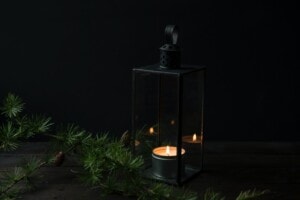
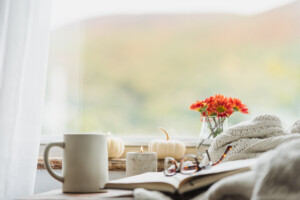















 United States
United States Canada
Canada